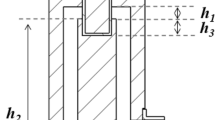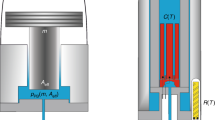Abstract
IN a valuable paper on the “Determination of High Temperatures” (Wied. Ann. 1895, No. 10), Messrs. Holborn and Wien give the results of their observations on the changes in the resistance of platinum wire over a range of 0° to 1600° C. The authors come to the conclusion that the relation between temperature and resistance “cannot be accurately represented by the Callendar and Griffiths formula”; although, on the other hand, they admit that by means of that formula Heycock and Neville have determined a number of melting points which are in good agreement (“die sich in guter Uebereinstimmung mit unsern Werthen befinden”) with the values found by Holborn and Wien when using a thermo-couple standardised by direct comparison with the air-thermometer.
This is a preview of subscription content, access via your institution
Access options
Subscribe to this journal
Receive 51 print issues and online access
$199.00 per year
only $3.90 per issue
Buy this article
- Purchase on Springer Link
- Instant access to full article PDF
Prices may be subject to local taxes which are calculated during checkout
Similar content being viewed by others
Rights and permissions
About this article
Cite this article
GRIFFITHS, E. The Measurement of High Temperatures. Nature 53, 389–390 (1896). https://doi.org/10.1038/053389b0
Issue Date:
DOI: https://doi.org/10.1038/053389b0
Comments
By submitting a comment you agree to abide by our Terms and Community Guidelines. If you find something abusive or that does not comply with our terms or guidelines please flag it as inappropriate.



